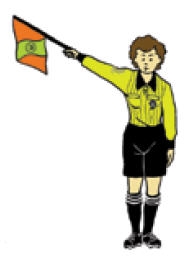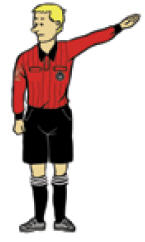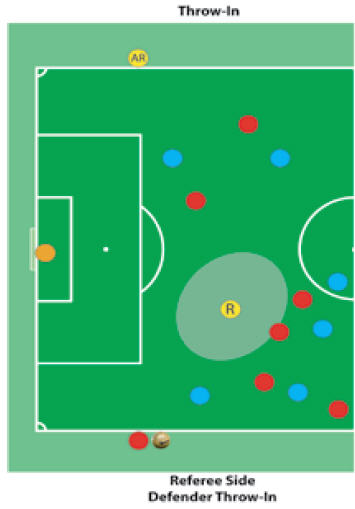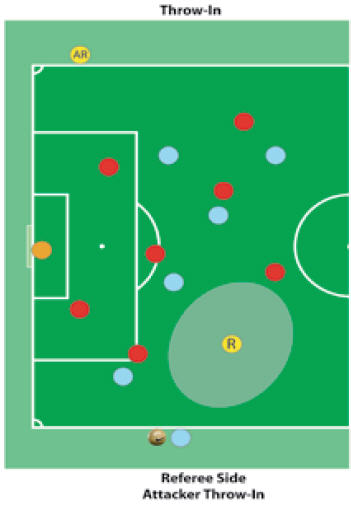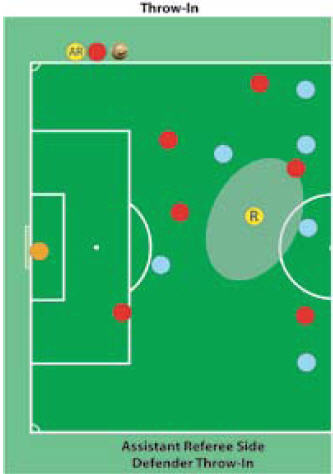 |
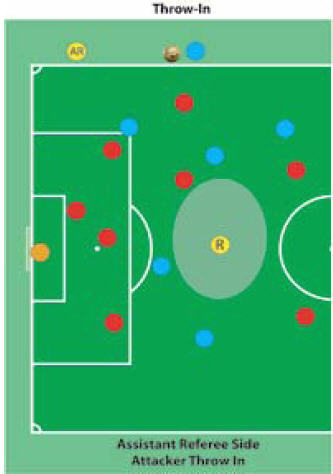 |
Properly taken Throw-In:
A throw-in must be performed while the thrower is facing the
field, but the ball may be thrown into the field in any directionLaw
15 states that the thrower "delivers the ball from behind and over his
head". This phrase does not mean that the ball must leave the
hands from an overhead position
A natural throwing movement starting from behind and over the head
will usually result in the ball leaving the hands when they are in
front of the vertical plane of the body
The throwing movement must be continued to the point of release
|
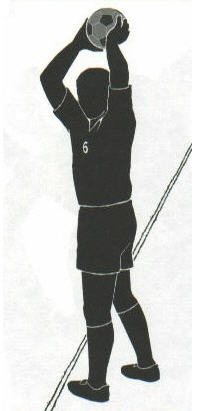
Graphic used with permission of Referee Magazine -
DO NOT COPY |
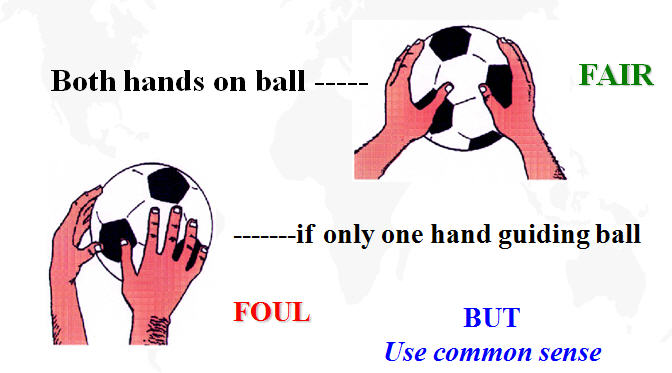 |
Both Hands:
There is no requirement prohibiting spin or rotational
movement.
However, if one hand is simply used to guide the ball and not
actually used to throw the ball, the referee may deem this an
infringement
|
Flip throw:
The acrobatic or "flip" throw-in is not by itself an infringement so
long as it is performed in a manner which meets the requirements of a
legal throw-in
|
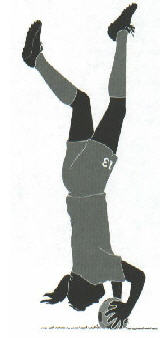
Graphic used with permission of Referee Magazine -
DO NOT COPY |
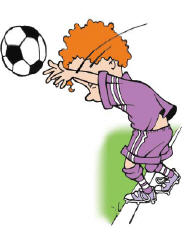 |
Trifling Infringements:
Referees are reminded that the primary function of the throw-in is to
put the ball back into play as quickly as possible.
At competitive levels of play, therefore, apparent technical
infringements should often be deemed trifling or doubtful so
long as an advantage is not obtained by the team performing the throw-in
and the restart occurs with little or no delay |
Opponent Behavior:
All opponents must stand no less than 2 yards/meters from the point a
which the throw-in is takenOpponents are prohibited from unfairly
distracting, interfering with, or impeding a player who is putting the
ball back into play on a throw-in
Referees should manage the minimum distance requirement at a throw-in
in the same way they manage the minimum distance requirement for free
kicks and corner kicks
The thrower has the option of performing the restart even if an
opponent is closer than two yards and the Referee should not ordinarily
interfere with quick throw-in restarts to enforce the minimum distance
unless this is requested by the thrower
|
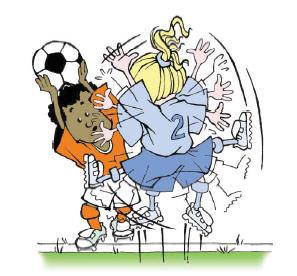 |
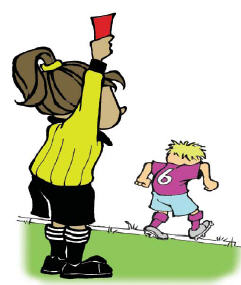 |
Thrower Behavior:
A throw-in taken in such a way that the ball strikes an opponent (in a
non-violent manner) is not by itself a violation of the LawIf it was
performed in a violent manner, the restart is
located at the place where the throw-in struck the opponent.
If the throw-in is deemed to have taken incorrectly or from the wrong
location, the correct
restart is a throw-in for the opposing team |
